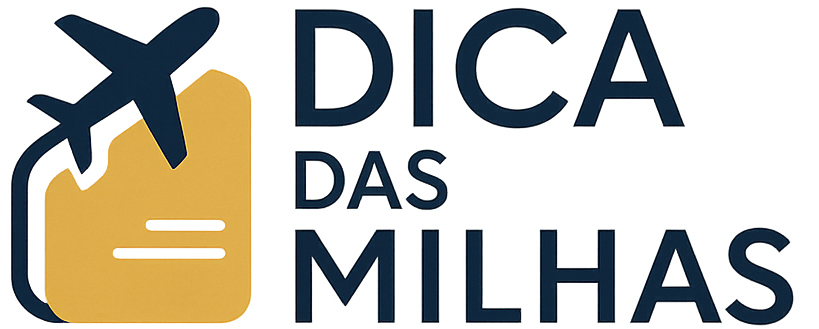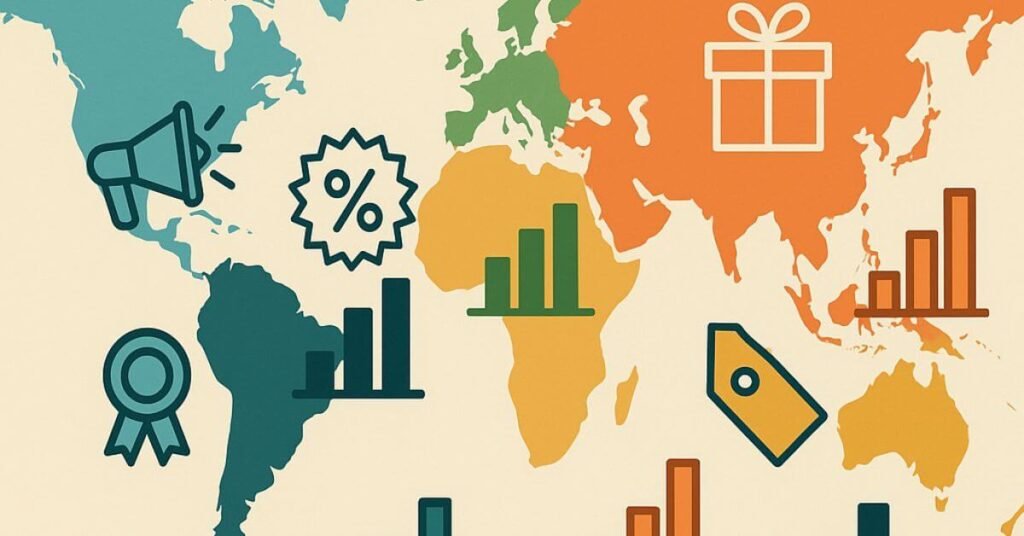If you’ve ever wondered why some travelers seem to get better deals, higher bonuses, or earlier access to promotions, the answer might be simpler than you think: their region. Loyalty programs, both airline and credit card based, often customize their promotions depending on where you live. This regional segmentation can lead to major differences in how many points you earn, what offers you get, and how much value you can extract.
In this article, you’ll discover how loyalty program promotions differ by region and country, what to expect depending on where you’re based, and how to use that knowledge to your advantage — no matter where in the world you are.
Why Do Promotions Vary by Region?
Loyalty programs tailor promotions by geography for several strategic reasons:
- Market behavior and competition vary widely across countries
- Partner relationships (banks, retailers, travel portals) are regional
- Regulatory rules may restrict or influence how promotions are run
- Currency values and redemption rates fluctuate across economies
- Customer value per region (based on spending, flying habits, etc.)
In other words, a 100% transfer bonus in Brazil doesn’t mean the same bonus will exist in the U.S., Europe, or Asia — and even if it does, the terms may differ drastically.
Key Promotion Types and Their Regional Differences
1. Transfer Bonuses from Credit Card Programs
Brazil:
- Livelo, Esfera, Iupp, Átomos frequently offer 70%–100% transfer bonuses
- These bonuses often apply when transferring to Smiles, TudoAzul, LATAM Pass, or TAP
- Club subscribers often get exclusive higher tiers
U.S. and Canada:
- Amex, Chase, Citi, and Capital One run 20%–40% transfer bonuses
- Transfers go to international airlines (British Airways, Flying Blue, etc.)
- Bonuses are less frequent and lower in percentage — but often more flexible
Europe:
- Transfer bonuses are rare due to fewer bank programs with flexible points
- Most promotions come via hotel partners (like Marriott → airlines) or corporate travel deals
Asia-Pacific:
- Programs like HSBC Rewards, Citi Asia, or DBS sometimes offer promos
- Transfer partners are mostly limited to regional airlines like KrisFlyer or Asia Miles
- Bonuses usually top at 15%–25%, and timing is unpredictable
2. Club or Subscription Offers
Brazil:
- Programs like Clube Smiles, Clube LATAM, and Clube TudoAzul offer:
- Welcome bonuses up to 40,000 miles
- Monthly accruals
- Exclusive transfer campaigns
- Very popular and heavily marketed
U.S.:
- Subscription models are rare
- AAdvantage, MileagePlus, and others have co-branded cards instead
- Perks are tied to card spend, not monthly plans
Europe:
- Airline clubs do exist (e.g., Flying Blue) but offer minimal point earnings
- Focus is on elite status benefits rather than mile accumulation
Asia-Pacific:
- Some loyalty clubs exist (e.g., Asia Miles subscription), but they’re less aggressive
- Corporate partnerships play a larger role in bonus structures
3. Shopping and Retailer Partnerships
Brazil:
- Livelo, Esfera, and others have strong e-commerce integrations
- Shopping portals offer 10x–20x points per dollar during sales
- Strong retail culture with constant stacking potential
U.S.:
- Portals like AAdvantage eShopping or MileagePlus Shopping are mature
- Points per dollar tend to be lower (2x–6x average)
- Frequent stacking with credit card promos and Rakuten (Amex MR points)
Europe:
- Fewer e-commerce partnerships
- Some regional airline portals exist, but offers are limited
- Miles often tied to travel spend, not shopping
Asia-Pacific:
- Increasingly active in countries like Singapore and Hong Kong
- Miles offered via food delivery, ride-hailing, and electronics
- Not yet as aggressive as Latin America or the U.S.
4. Award Redemptions and Promo Discounts
Brazil:
- Frequent award sales: 30%–60% off domestic or international flights
- Flash promos (especially via Smiles) several times a month
- Clube members often get better redemption rates
U.S. and Canada:
- Airlines use dynamic pricing, so promotions are harder to define
- Flash sales exist but are less predictable and often offer minor savings
- Upgrade promos more common than discounted redemptions
Europe:
- Flying Blue has Promo Rewards every month, with 25%–50% discounts
- Other airlines (like Lufthansa) rarely run visible promotions
Asia-Pacific:
- More regional sales (e.g., Cathay Pacific, Singapore Airlines)
- Focus on redemptions through partner airlines, often at standard rates
- Flash sales tied to holidays or new route launches
How to Adjust Your Strategy Based on Region
If You’re in Brazil
- Focus on high transfer bonuses with Livelo and Clube benefits
- Stay subscribed to a club (e.g., Smiles) for stacking access
- Use shopping portals like Livelo and Esfera to multiply earnings
- Take advantage of award flight flash sales several times a month
If You’re in the U.S.
- Track Amex, Chase, and Capital One transfer bonuses carefully
- Leverage shopping portals and Rakuten (Amex MR) for stackable points
- Watch for dynamic pricing drops rather than fixed promo discounts
- Focus on flexible point value, not just volume
If You’re in Europe
- Sign up for Flying Blue’s monthly Promo Rewards
- Focus on credit card welcome bonuses (though they’re less generous)
- Look for partner travel promos (hotels, rail, car rentals)
- Consider U.S.-based cards if you’re eligible for international accounts
If You’re in Asia-Pacific
- Prioritize airline cards tied to KrisFlyer, Asia Miles, or Velocity
- Monitor e-commerce and digital service partners (e.g., Grab, Gojek, Shopee)
- Watch for national holiday promos (Golden Week, Lunar New Year, etc.)
- Use point pooling or family sharing options if available
Real-Life Comparison: Same Program, Different Region
Let’s compare TAP Miles&Go promotions in Brazil vs. Europe:
In Brazil:
- Frequent 100% bonus when transferring from Livelo
- Monthly subscription club with bonus miles
- Flash promos on redemptions (especially to Europe)
In Portugal:
- No Livelo, so fewer opportunities to boost balance
- Subscription model exists but is less popular
- Bonuses mostly tied to actual flight activity
Brazilian travelers get far more promotional upside — even with the same airline.
Tips to Take Advantage of Regional Differences
1. Open Local and Global Accounts
Some airline programs allow users to open an account regardless of location. If you travel internationally, consider joining:
- One U.S. program (e.g., AAdvantage, Delta SkyMiles)
- One local program (e.g., Smiles or Flying Blue)
- One hotel program with global promos (e.g., Marriott Bonvoy)
This diversifies your access to regional deals.
2. Use a VPN to View Geo-Restricted Offers
Some promos only show up based on IP address.
Using a VPN can help:
- Reveal promotions available in another country
- Book region-specific deals while abroad
- Compare redemption rates more fairly
3. Subscribe to Regional Newsletters
Join mailing lists in multiple languages if possible. Use Google Translate to understand deals that only appear on local pages.
4. Follow Regional Influencers and Blogs
Different regions have different promo ecosystems. Some suggestions:
- Brazil: Melhores Destinos, Passageiro de Primeira
- U.S.: The Points Guy, Frequent Miler
- Europe: Head for Points, InsideFlyer EU
- Asia: Mainly Miles, The MileLion
5. Be Aware of Tax and Fee Differences
Even if a promo is global, award ticket taxes vary greatly by country. For example:
- London often adds $200+ in airport fees
- Brazil charges small ticket taxes
- U.S. domestic redemptions have minimal fees
Always calculate total cost, not just mileage required.
Final Thoughts: Regional Insight Is Power
Knowing how loyalty program promotions differ by region and country gives you a significant edge in the game of points and miles. Instead of blindly following global strategies, you’ll adapt to your environment — or better yet, use regional advantages to unlock value most travelers never see.
Be aware of where the deals are best, know when to act local and when to think global, and always tailor your promo strategy to your region’s strengths.
That’s how you turn miles into miles ahead.
Elaine A. da Silva is a Brazilian travel and finance enthusiast, best known as the creator of the blog Dica das Milhas. With a strong background in personal finance and a passion for exploring smart travel strategies, she specializes in simplifying the world of airline miles and travel rewards for everyday people. Through her blog, Elaine shares practical tips, insider knowledge, and step-by-step guides to help readers save money and travel more efficiently using loyalty programs and credit card points.







